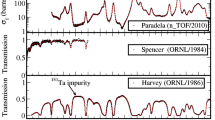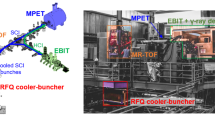Abstract.
The synthesis of new, artificial elements beyond uranium was at the cutting-edge of physical research in the 1930s, and nearly half a dozen transuranium elements were reported between 1934 and 1938. Nuclear physicists and radiochemists collaborated closely, but each field introduced fundamental assumptions that proved to be false: that nuclear changes would always be small, and that transuranium elements would resemble transition elements chemically. With its surprise ending in the discovery of nuclear fission, the misguided transuranium project can be viewed as an example of the illogical progress of scientific discovery. It is also an example of an interdisciplinary collaboration that was flawed yet crucial, for although chemists and physicists both contributed to the delay in discovering fission, their collaboration was essential in leading them to it in the end.
Similar content being viewed by others
Author information
Authors and Affiliations
Rights and permissions
About this article
Cite this article
Sime, R. The Search for Transuranium Elements and the Discovery of Nuclear Fission. Phys. perspect. 2, 48–62 (2000). https://doi.org/10.1007/s000160050036
Issue Date:
DOI: https://doi.org/10.1007/s000160050036




